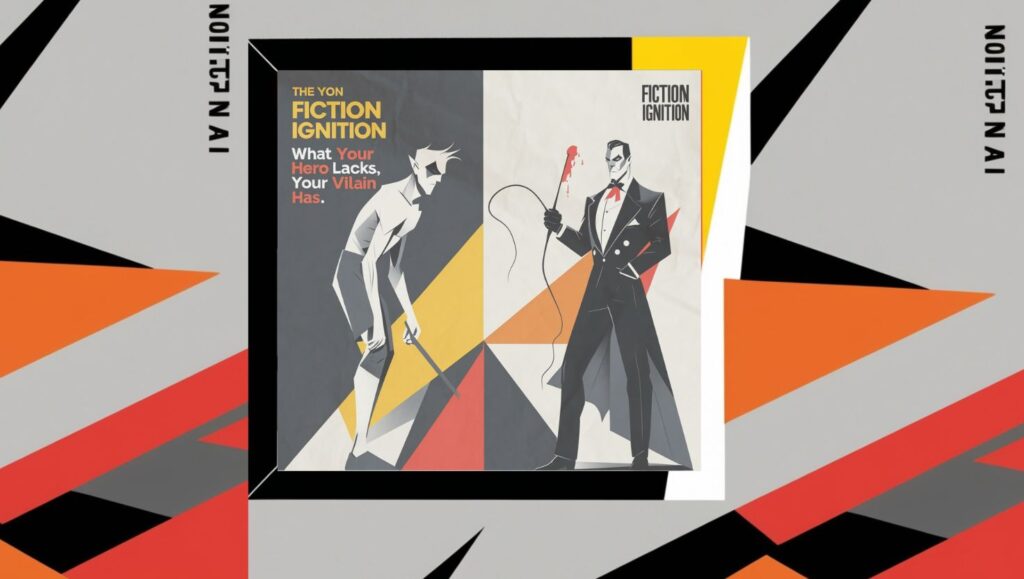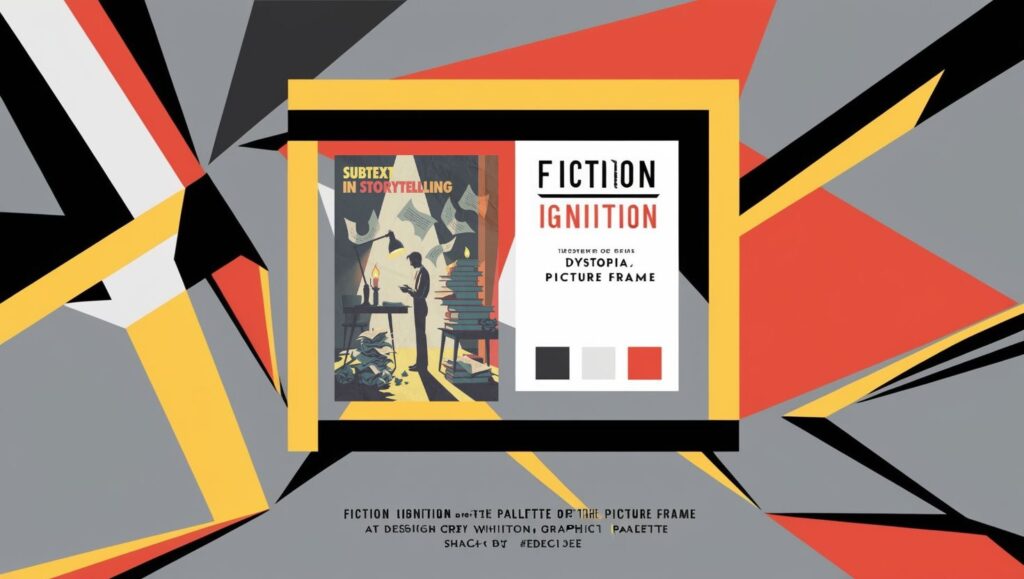Hello, Fiction Igniters!
Let’s get real for a second: nothing kills a story’s momentum faster than a character stopping mid-adventure to monologue about their traumatic childhood… or that one time they saved a cat from a tree. We’ve all read books or watched movies where the backstory felt like it came out of nowhere, slapped onto the plot like a bad patch job. But here’s the thing—backstory isn’t the problem. It’s the delivery! Done right, it’s like seasoning in a stew—subtle, flavorful, and essential.
So buckle up, my literary pyromaniacs, because today we’re diving into the art of layering your characters’ histories without putting your readers to sleep. I’ll give you actionable tips, and we’ll pull examples from some legendary storytellers. By the end of this, you’ll have the tools to make backstory your secret weapon instead of your Achilles’ heel.
1. Show, Don’t Tell (But Do It Smartly)
Ah, the golden rule of storytelling. But let’s clear this up—”show, don’t tell” doesn’t mean dragging your readers into a 10-page slow-motion flashback of your protagonist’s disastrous prom night or their first heartbreak. Instead, slip it into the narrative like seasoning in a perfect dish. Sprinkle a line of dialogue here, toss in a subtle gesture there—just enough for your readers to taste the history without choking on it.
Example: Look at J.K. Rowling’s handling of Snape in Harry Potter. For six books, we get hints about his murky past—his bitterness, his unrequited love, his rivalry with James Potter. It’s not until The Deathly Hallows that we get the full picture. By then, we’re invested, and the revelation hits like a tidal wave. That’s how you layer backstory without derailing the narrative.
Pro Tip: When writing, think of every character’s backstory as a puzzle. Don’t dump all the pieces on the table at once. Let your readers assemble it slowly—that’s where the magic happens.
2. Let the Backstory Impact the Present
If your character’s past doesn’t affect what they’re doing right now, cut it. Backstory isn’t a scrapbook; it’s a foundation. Your character’s actions, fears, and decisions should feel rooted in their history.
Example: Think about Breaking Bad. Walter White’s backstory as a brilliant but overlooked chemist feeds every decision he makes. His bitterness and resentment drive his descent into darkness. Without that history, his transformation wouldn’t resonate.
Pro Tip: Ask yourself: How does this character’s past influence their goals, fears, or relationships? If the answer is “it doesn’t,” either rewrite it or toss it out.
3. Use Subtext Like a Pro
Here’s where things get juicy. Subtext is your backstory’s best friend. Instead of spelling everything out, let the reader infer it through subtext. This technique makes your writing feel layered and keeps your readers engaged.
Example: Ernest Hemingway’s “Iceberg Theory” is all about subtext. In Hills Like White Elephants, a seemingly mundane conversation between a man and a woman hides a deep backstory about an unspoken pregnancy. Hemingway doesn’t spell it out, and that’s what makes it powerful.
Pro Tip: When writing dialogue, consider what your characters aren’t saying. What’s beneath their words? Let your readers read between the lines.
4. Backstory as Mystery
Humans love solving puzzles. If you sprinkle hints about your character’s past without giving everything away upfront, you’ll keep your readers hooked. They’ll want to keep reading to uncover the full story.
Example: In The Mandalorian, we don’t learn much about Din Djarin’s past in the beginning. We know he’s a Mandalorian, we know he’s got some serious skills, but his full backstory is doled out in tantalizing pieces. This drip-feed approach keeps the audience glued.
Pro Tip: Write your character’s backstory like a mystery novel. Start with the big questions: Who are they? Why are they the way they are? Then reveal the answers one at a time.
5. Use Flashbacks Sparingly (and Strategically)
Flashbacks are like spice. A little goes a long way. Use them to show pivotal moments in your character’s history, but keep them brief and relevant to the present plot.
Example: In The Godfather Part II, we get flashbacks to Vito Corleone’s rise to power. These scenes are essential because they parallel Michael’s storyline. They’re not just there to fill space; they deepen the theme of legacy and corruption.
Pro Tip: Before you write a flashback, ask yourself: Does this scene reveal something the audience needs to know right now? If not, save it for later or cut it.
6. Use Symbolism to Represent Backstory
Sometimes, a single object or image can communicate volumes about a character’s past.
Example: In The Great Gatsby, the green light at the end of Daisy’s dock symbolizes Gatsby’s longing and his inability to let go of the past. Fitzgerald doesn’t need to explain it—the light does all the heavy lifting.
Pro Tip: Think about your character’s most significant memory or regret. Is there an object, place, or image tied to it? Use that as a recurring motif.
7. Kill the Info Dumps
This one’s non-negotiable, my fellow prose pioneers. If you’ve got pages of backstory delivered in one chunk, your readers will skim faster than a stone skipping across a pond.
Example: Stephen King is a master at avoiding info dumps. In It, we learn about each member of the Losers’ Club through action and interaction, not long-winded exposition. Their histories unfold naturally as the story progresses.
Pro Tip: Instead of dumping backstory, think about how to reveal it through action, dialogue, or conflict.
8. Use Relationships to Reveal History
How characters interact with one another often says more about their backstory than words ever could. Relationships are goldmines for uncovering hidden depths.
Example: In Stranger Things, the dynamic between Eleven and Hopper reveals a lot about both their pasts. Hopper’s overprotectiveness stems from losing his daughter, and Eleven’s struggles with trust reflect her traumatic upbringing. Their relationship slowly unpacks their histories without heavy-handed exposition.
Pro Tip: Develop relationships where the backstory comes out naturally, like the way scars are revealed during quiet moments of trust.
9. Tie Backstory to the Theme
If your character’s past doesn’t connect to the central theme of your story, you’re missing an opportunity. A backstory that resonates with the theme will add depth and cohesion.
Example: In The Kite Runner by Khaled Hosseini, Amir’s backstory of betrayal and guilt is tied directly to the novel’s themes of redemption and loyalty. His journey to confront his past feels inevitable and deeply satisfying.
Pro Tip: Identify your story’s theme and ask: How does my character’s past reinforce this idea? Use that connection to make the backstory feel integral.
10. Add Layers Through Setting
Sometimes, the environment your character lives in can reflect their backstory. A home, workplace, or even a single room can speak volumes.
Example: In Fight Club, the narrator’s dingy apartment and its obsessive IKEA furnishings reflect his inner emptiness and longing for meaning. It’s a physical representation of his dissatisfaction.
Pro Tip: Think about how your character’s environment mirrors their past. Use setting as a subtle but powerful storytelling tool.
Final Thoughts
Remember, Fiction Igniters, backstory isn’t just about where your characters came from. It’s about how their past shapes who they are and what they do. Layer it in like an expert baker icing a cake—smooth, subtle, and oh-so-delicious.
So, until next time: don’t write, ignite!









